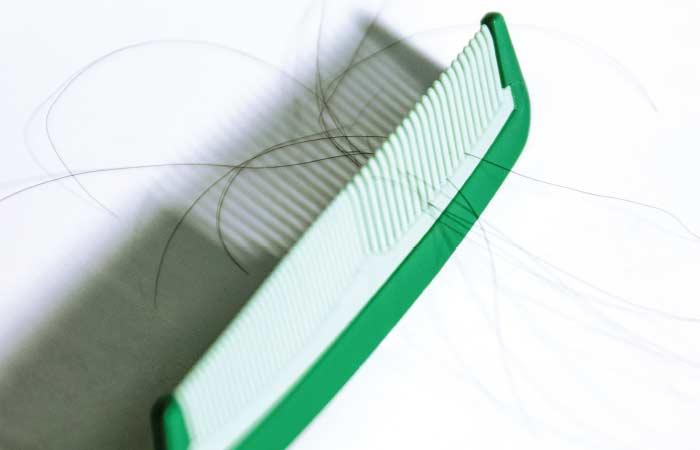N/A

In an average day, people lose up to 100 hairs from their scalp. This is completely normal and in most cases the hairs grow back. But if your hair is not growing back at the normal rate, it is likely that you are beginning to experience Androgenic Alopecia – or put simply, ‘hair loss’. While it is completely natural to experience this as part of the ageing process it can be alarming when it happens prematurely.
Hair loss can be attributed to many causes: it can be hereditary; it can follow a period of excessive stress, for example a major surgery; serious illness; pregnancy or drastic weight loss; or it can be the result of a sudden change in diet or lifestyle. You can also lose your hair if you have certain diseases, such as thyroid problems, diabetes, or lupus. The weather and pollution can also have an impact on the health of one’s hair. But there is one other factor that people living or spending a lot of time in Vietnam question – and that is water quality.
Many expats or newcomers to Vietnam believe their sudden and unprecedented hair loss upon arrival is the consequence of the poor quality of water in which they are showering, with many claiming that changing one’s shower filter produces remarkable results. But the truth is there is no scientific evidence this is the case. Beyond impacting the quality of one’s hair, poor shower water quality has not been scientifically linked to the phenomenon of hair loss.
That being said, it must be acknowledged there are significant health concerns relating to Vietnam’s water quality. Water pollution in Vietnam is the serious result of rapid urbanisation without adequate environmental considerations. The Saigon-Dong Nai river system is a significant source of water for the 15 million people living in Ho Chi Minh City – an alarming fact considering the high levels of waste discharged into the basin, some 29,700 cubic meters a day in 2017, in fact. According to a study by the Institute for Environment and Resources, Dong Nai is severely polluted by discharge from residential areas, hospitals, mining companies, factories, waterway transport vessels, farms – even garbage dumps.
Furthermore “hard water”, which describes the type of water used by residential households across much of Ho Chi Minh City, contains large amounts of chemicals and metals such as magnesium, barium, calcium, silica and dissolved minerals, as well as organic micro-pollutants that can cause disruption to the reproductive system, central nervous system or immune system.
According to Family Medical Practice internist Dr. Ruben Martinez-Castejon, the main pollutant that can affect hair growth is arsenic, and the problem of arsenic poisoning was solved by health authorities many years ago.
“It was found that Red River water in Hanoi was rich in arsenic — tens of times higher than internationally accepted for drinking,” he said. “Now it is only those people drinking from natural sources – in other words, rural, untreated water – who could be at risk of arsenic exposure. Anyhow environmental arsenic influence on hair growth is something that takes a very long time to happen.”
Dr. Martinez-Castejon added that acute exposure to high quantities of thallium could also lead to acute and severe hair loss, but many other symptoms will occur before hair loss.
“Cadmium exposure also looks to be related to chronic telogen effluvium, and in such a case it would be good to check levels in your water supply,” he added. Overall, Dr. Martinez-Castejon concluded that the quality of water coming from household taps and showers in Ho Chi Minh had not been proven to affect hair loss, but rather hair quality.
“It’s true that there are hard and soft waters and that distilled waters will lead to a lower amount of calcium carbonate deposition on hair, which makes hair look thicker and nicer,” he said.
While it may be easy to jump to the conclusion that your hair loss is being caused by water pollutants, the truth is that around 50% of people will suffer some degree of pattern hair loss before turning 50, with the most common causes of hair loss experienced in Ho Chi Minh City being androgenic alopecia in men, female pattern hair loss, female androgenic alopecia, telogen effluvium acute and chronic, and alopecia areata, all of which are normally associated with infection, general autoimmune or rheumatic disease.
Hypothyroidism, ringworm of the scalp – even your haircare routine may be responsible for your hair loss, and it is important to rule these out before anything else.
Health professionals recommend consulting with your doctor to explore exactly why you are experiencing hair loss.
WHAT KIND OF HAIR LOSS ARE YOU EXPERIENCING?
Telogen effluvium: rapid hair loss (by handfuls), normally occurs after severe weight loss, stress, sickness or post-pregnancy
Female pattern hair loss: hair thins on sides and apex, slowly and progressively, supposedly a result of increased activity of an enzyme called 5-alpha reductase on the scalp.
Male or androgenic alopecia: caused by the same as female pattern hair loss, but instead the front line and apex recedes.
Alopecia areata: an autoimmune but not scarring alopecia and may be associated to other autoimmune diseases such as diabetes or thyroiditis.
 Chúng tôi sử dụng cookies để cải thiện trải nghiệm của người dùng khi truy cập trang web này
Chúng tôi sử dụng cookies để cải thiện trải nghiệm của người dùng khi truy cập trang web này